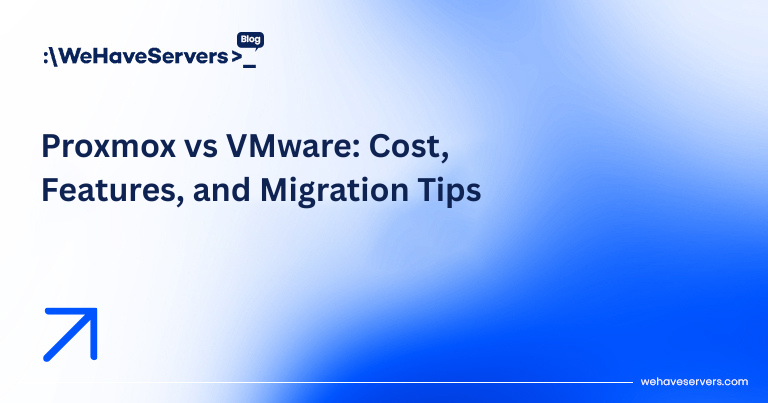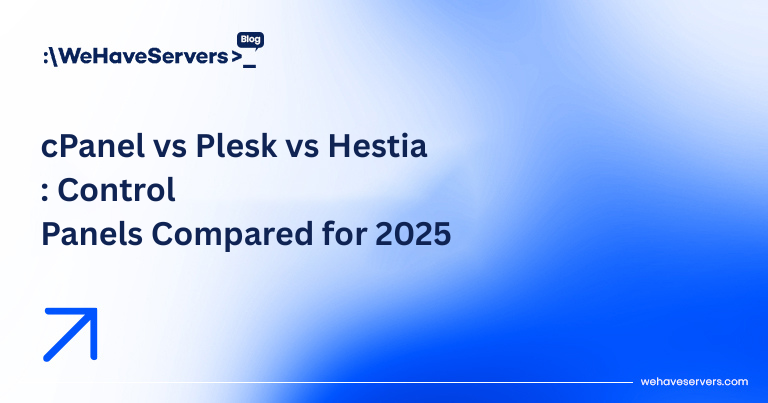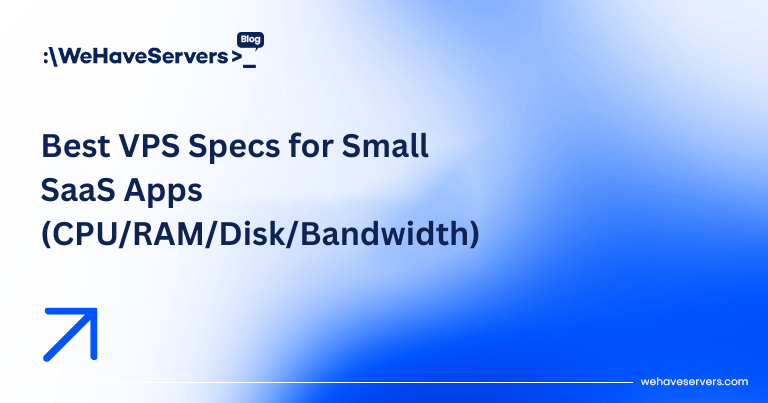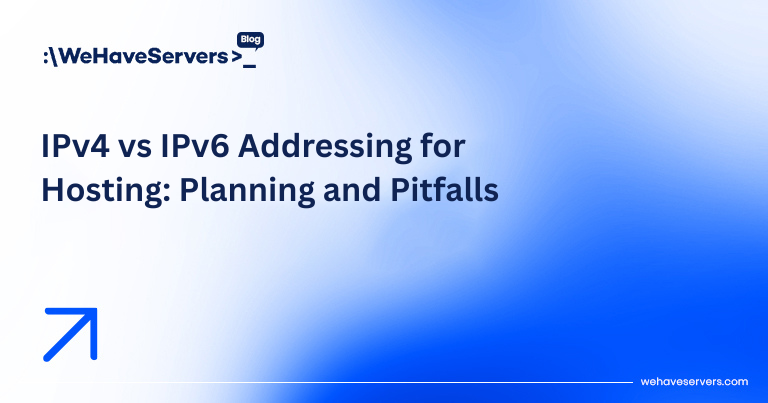
Proxmox vs VMware: Cost, Features, and Migration Tips
Proxmox vs VMware: Cost, Features, and Migration Tips
Virtualization remains at the heart of modern hosting, cloud, and enterprise IT. In 2025, two solutions stand out in discussions among sysadmins and infrastructure managers: Proxmox Virtual Environment (PVE) and VMware vSphere/ESXi. VMware has long been the enterprise leader, while Proxmox has grown into a powerful open-source alternative embraced by hosting providers and SMBs. This article compares costs, features, and migration strategies for organizations considering a switch.
🔹 Cost Comparison
Licensing is the biggest differentiator between Proxmox and VMware.
VMware vSphere (2025)
- VMware subscription licensing (Broadcom acquisition shifted away from perpetual).
- Typical enterprise bundle costs €3,000–€7,000 per CPU socket annually.
- Add-ons (NSX, vSAN, Horizon) increase costs further.
- Support contracts required for updates.
Proxmox VE
- Free and open-source base software.
- Optional support subscriptions starting at €105/year per CPU socket.
- All features included (clustering, storage, backup) with no license restrictions.
👉 For hosting providers and SMBs, Proxmox offers a cost savings of 80–90% compared to VMware. Enterprises with compliance obligations often stick with VMware due to vendor support requirements.
🔹 Feature Comparison
| Feature | Proxmox VE | VMware vSphere/ESXi |
|---|---|---|
| Virtualization | KVM/QEMU full virtualization + LXC containers | ESXi hypervisor, full virtualization only |
| Storage | Ceph integration, ZFS, LVM, NFS, iSCSI | vSAN (licensed), NFS, iSCSI, FC |
| Networking | Linux bridges, OVS, VLAN, VXLAN | vSwitch, DVS, NSX (extra license) |
| Clustering | Built-in clustering with Corosync | vCenter Server required |
| High Availability | HA built-in, watchdog-based fencing | HA via vCenter + DRS |
| Backup | Proxmox Backup Server (native) | Veeam or third-party (extra license) |
| Management | Web GUI, CLI, REST API | vSphere Client, API, PowerCLI |
| License Restrictions | None (all features included) | Tiered by edition, many features require upgrades |
🔹 Performance Considerations
Both platforms use modern virtualization technologies. In benchmarks:
- CPU performance: Comparable between Proxmox KVM and VMware ESXi.
- Memory: Proxmox benefits from Linux kernel optimizations; VMware has mature memory ballooning.
- I/O: NVMe passthrough and SR-IOV supported by both. Proxmox shines with ZFS caching, VMware with vSAN performance.
For high-performance hosting (AI/ML, GPU passthrough), both are viable, though Proxmox’s community-driven features are often faster to adopt.
🔹 Migration Tips
Switching from VMware to Proxmox is increasingly common due to cost pressures. Key migration steps:
- Inventory: Use
RVToolsor vSphere reports to document VM configurations. - Export VMs: VMware VMs can be exported as OVF/OVA or raw disk images.
- Convert Disks: Use
qemu-img convertto transform VMDK into QCOW2 or RAW for Proxmox.qemu-img convert -f vmdk server.vmdk -O qcow2 server.qcow2 - Networking: Rebuild vSwitch/port group settings into Proxmox bridges/VLANs.
- Testing: Run staging workloads in parallel before production cutover.
- Monitoring: Integrate Proxmox cluster into Zabbix or Prometheus after migration.
🔹 Use Cases
Hosting Providers
Proxmox is attractive for VPS hosting and private cloud. Multi-tenant features, Ceph integration, and container support make it ideal for competitive pricing models.
Enterprises
VMware remains the leader for regulated industries (finance, healthcare) requiring certified vendor support, advanced NSX networking, or Horizon VDI.
SaaS Startups
Proxmox is favored due to cost savings and flexibility. Combined with Ansible/Terraform automation, it enables rapid scaling without licensing overhead.
🔹 Security Considerations
- Proxmox: Relies on Linux security stack (AppArmor/SELinux), frequent updates, two-factor login, firewall integration.
- VMware: Enterprise-grade patch cycle, role-based access control (RBAC), compliance certifications (FIPS, FedRAMP).
For government or compliance-driven environments, VMware has the advantage due to certifications. For hosting and SMBs, Proxmox security is sufficient when hardened properly.
✅ Conclusion
In 2025, the decision between Proxmox and VMware often comes down to cost vs compliance. VMware offers the most polished enterprise ecosystem with robust vendor support — but at steep licensing costs. Proxmox provides 90% of the functionality for a fraction of the price, with built-in clustering, Ceph, ZFS, and backup tools. For hosting providers, SMBs, and startups, Proxmox is the clear choice. For large enterprises with compliance requirements, VMware still dominates.
At WeHaveServers.com, we support both VMware and Proxmox for colocation and dedicated environments in our Romanian/EU data centers, helping clients choose the right platform based on workload and budget.
❓ FAQ
Is Proxmox production-ready?
Yes. Thousands of hosting providers and enterprises run Proxmox in production. Its clustering and backup features are stable and widely used.
Why is VMware more expensive?
VMware licenses include enterprise support, certifications, and proprietary features like NSX and vSAN that Proxmox alternatives replicate with open-source tools.
Can I migrate from VMware to Proxmox easily?
Yes. Export VMs, convert disks with qemu-img, and rebuild networks. Staging tests are essential before full cutover.
Does Proxmox support Windows VMs?
Yes. Proxmox supports Windows guests with VirtIO drivers for optimal performance.
Which is better for SaaS startups?
Proxmox, due to low cost, flexibility, and rapid feature adoption. VMware is usually overkill for early-stage SaaS.



